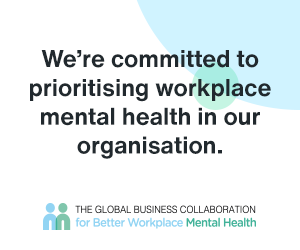By Ehsan Fahmi
Over the past few months, doing things virtually has become the new normal, from online workouts and medical consultations to attending webinars and exploring e-learning. Most of these virtual solutions have existed for years, but, as often with new initiatives, only a portion of people had actually adopted them until now.
When it comes to our own business – and more specifically to assessments centres – for years, many organisations preferred a face-to-face approach because these were slightly more personalised. In the past three months however, everyone was forced to reflect, review, and reset many processes. On the one hand, online solutions were adopted more quickly and on the other, the solution providers who were nimble enough, perfected their virtual platforms, as we did with our Virtual Learning Centres, to deliver a solution that was not just on par with the traditional ones, but also more effective. As a result, many companies don’t even want to go back to the “old way” of doing things.
From what I can tell so far, organisations that are taking the virtual route to assess their talent will outperform their competitors when it comes to both attracting and retaining top performers in this new age. Let me explain why.
Time and cost efficiency
This is an obvious benefit, but worth mentioning. Because virtual centres involve the use of videos, web-conferencing tools, interactive online questionnaires and instant messaging services, you minimise costs in travel, logistics and printing. You also save a lot of time as planning for virtual events is a lot faster and easier. As such, virtual centres are also a lot easier to scale in size.
A truer reflection of the real world
In the real world, a lot of individual and group projects are primarily done online. We are solving business challenges on WhatsApp, sending quick voice notes, responding to emails while we are on the go. Traditional assessments centres are “old school” in that they don’t make participants utilise these technologies. Virtual ones, however, can simulate a realistic work environment, thus providing them with a more accurate preview of what to expect in the organisation.
Stronger employer branding
Assessments are one of the first few brand touchpoints candidates have with an employer. Companies that deliver their assessment through new technologies position their brand as more innovative and thus, are more compelling to candidates. Conducting virtual development centres is also more engaging when it comes to an organisation’s employees, which brings me to the next point.
A superior candidate experience
One of the things we have noticed is that when individuals participate in a virtual assessment, they are more engaged in the process. This is in large part due to the flexibility that is offered. Because candidates can choose when and where to do the assessments, they are more likely to be mentally prepared and will have a stronger sense of “owning” the process. I have also found that many participants – especially the under 40 group – feel a lot more comfortable and less intimidated in a virtual environment.
Fair and equivalent
Virtual assessments enable a fairer, more standardised and consistent approach compared to traditional assessment centres, due to the limited use of assessors.
As you can see, there are many upsides to transitioning into a virtual scenario. Keep in mind however that there are a few things you need to consider when switching over to an online solution. Here are my top 3 tips:
1. Manage the change
Going virtual is usually daunting for traditional organisations because its employees have been following the same processes for years. Having said that, the current climate has helped push change through more easily. Nevertheless, ensure you have a solid change management strategy built around communication, transparency, reskilling, and measuring success factors.
2. Test the technology and set yourself up for success
Our increased use in technology in recent months has helped many overcome their fear of technology so they can learn how to use it effectively. Still, always make sure things testing the solution before you roll it out and be mindful of things like ensuring having a stable internet connection. Also, clearly communicate the instructions and guidelines to everyone before you launch the virtual assessment centre.
3. Address data security concerns
Organisations are concerned about the confidentiality and security of their assessment materials online and also feel less in control when candidates are not in front of them. Rest assured, virtual assessment centres are often more secure as everything is stored in one central place, compared to traditional ones, where papers can be left lying around or lost. Virtual assessments are also proctored, which means candidates are watched at all times and companies are notified if screenshots are taken or if they leave the room when they are not supposed to.
If you have any questions on this or in case you are still on the fence about transitioning your physical assessments to the online world, please reach out and I’ll be more than glad to answer any concerns you may have.







